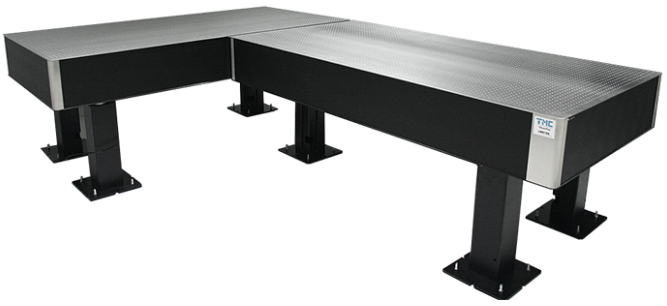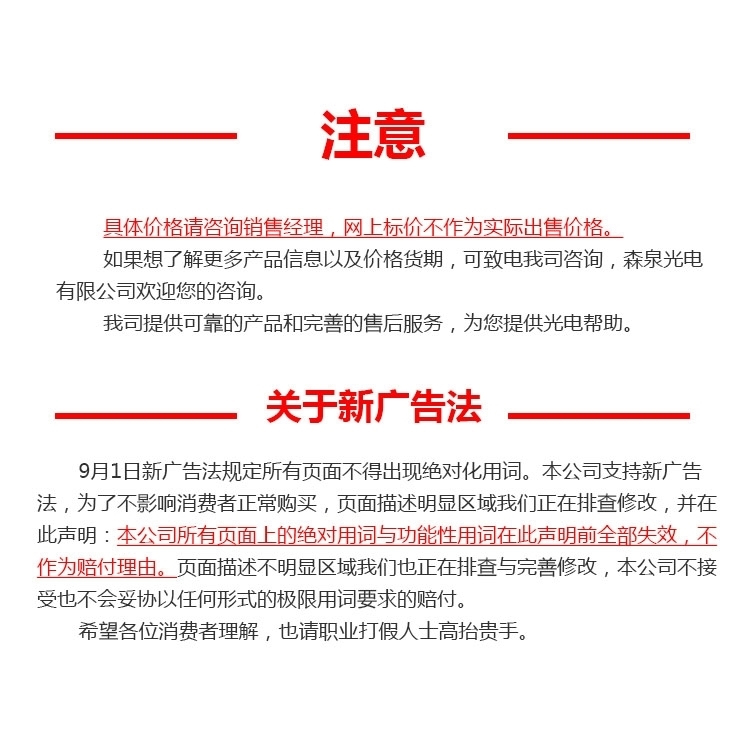
TMC拼接光学平台

产品概述
CleanTop光学顶部可提供多个部分,最大尺寸为1.5米 x 4.8米(5英尺 x 16英尺)。 复杂的光束路径通常需要更大的尺寸,这可通过连接顶部来实现。 为了达到理想的效果,联轴器不得影响接头的刚度、阻尼或平整度。
通过将一个经过精密磨削和对齐的专有接合板系统焊接到顶部的结构元件上,TMC可以在光学平台之间提供刚性联接。 TMC独特的工艺包括对齐技术,可确保顶部保持高平整度规格,而不会因接合板焊接到顶部的热效应而发生变形。
该设计可以分离并可单独或在联接状态下支撑顶部。
拼接式平台配置可与任何TMC性能系列或特殊系列的顶部结合使用
产品优势
独特的工艺确保了接头间的平整度、刚度和阻尼。
顶部可以分离并作为单独的面板支撑。
拼接式平台工艺与TMC的各种被动和主动隔振支撑选件兼容。
拼接后,平台就像一个整体结构。 与所有大型结构一样,较大拼接系统的行为将与单个顶部的行为不同。
拼接平台技术确保了多个顶部之间的平整度。 接合板是一组经过精密磨削的、厚20毫米(0.75英寸)的配套钢材,带有一套定位销,用于保持对齐。 板沿着接合板的整个长度焊接在顶部和底部蒙皮上。 在组装完成后,用不锈钢带覆盖接合板。
接合板的标准材料是钢。 CleanTop光学顶部的非磁性版本通常与304合金不锈钢接合板连接。
在具有多个接头的拼接式平台配置中,每个接头都是一个匹配组,并且顶部不可互换。 如果预计今后需要一个额外的拼接部分,则可以使用“稍后拼接”选件。


森泉为您的科研事业添砖加瓦:
激光控制:激光电流源、激光器温控器、激光器控制、伺服设备与系统等等
探测器:光电探测器、单光子计数器、单光子探测器、CCD、光谱分析系统等等
定位与加工:纳米定位系统、微纳运动系统、多维位移台、旋转台、微型操作器等等
光源:半导体激光器、固体激光器、单频激光器、单纵模激光器、窄线宽激光器、光通讯波段激光器、CO2激光器、中红外激光器、染料激光器、飞秒超快激光器等等
光机械件:用于光路系统搭建的 gao 品 zhi 无应力光机械件,如光学调整架、镜架、支撑杆、固定底座等等
光学平台:主动隔振平台、气浮隔振台、实验桌、刚性工作台、面包板、隔振、隔磁、隔声综合解决方案等等
光学y件:各类晶体、光纤、偏转镜、反射镜、tou射镜、半透半反镜、滤光片、衰减片、玻片等等
染料:激光染料、荧光染料、光致变色染料、光致发光染料、吸收染料等等